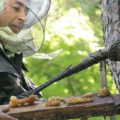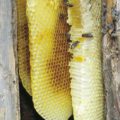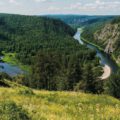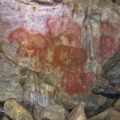The Bashkir Ural Biosphere Reserve is famous not only for its impenetrable forests and caves with rock paintings. It is the last region that preserved the population of the Burzyan bee and the ancient craft of honey hunting.
Kingdom of wildlife
The western macroslope of the Southern Urals accommodates an amazing place — the Bashkir Urals Biosphere Reserve. It embraces five specially protected natural territories of federal and regional significance: the Shulgan-Tash State Natural Biosphere Reserve, the Bashkiria National Park, the Muradymovskoye Gorge Natural Park, the Altyn Solok Natural Zoological (Entomological) Sanctuary, and the Iksky Natural Zoological Reserve. The complex biosphere reserve covers almost 3,500 square kilometers. Most of this area is occupied by broad-leaved forests of the European type, with light-coniferous and small-leaved forests of the Siberian type with grass layer in the eastern part of the reserve.
The complex Bashkir Urals Biosphere Reserve has a variety of landscapes: gorges of mountain streams, syrts (hills) with plateau-like tops, ridges with steep slopes, floodplains, and reservoirs. There you can also observe natural geological sections of the Bashkirian stage with the traces of life of marine invertebrates that are 300 million years old. There are 166 caves discovered on the territory of the reserve, and several of them are of global significance. For example, Staromuradymovskaya and Shulgan-tash caves are famous for their ancient rock paintings, while Sumgan cave is the deepest in Europe. In addition to the underground forms of karst, the reserve has its surface forms such as funnels, bridges, canyons, remnants, and cave-in lakes.
Low human impact, a wide variety of relief forms, the junction of two large forest biomes — all these factors determine the extremely high diversity of plant and animal species in the territory of the Bashkir Urals.
Honey hunting as an ancient craft
In 2012, the Bashkir Ural Reserve entered the UNESCO World Network of Biosphere Reserves. One of the weighty arguments in favor of this decision was the fact that the Bashkir Urals are home for not only rare species of plants and animals, but also the gene pool of the Burzyan wild bee, and the region preserves the ancient tradition of honey hunting associated with it.
Honey hunting is different from beekeeping as it implies extracting honey from wild bees living in tree hollows. This is the oldest form of beekeeping. In the 15th-16th centuries, honey hunting spread from the Ural Mountains all the way to the middle of modern Germany, but as Europe was cutting down its forests for plowing, this craft virtually disappeared.
In Russia, honey hunting in state-owned forests was banned by a royal decree in the late 19th century. By this time, more efficient beekeeping had already evolved, and foresters complained that honey hunters kept starting fires in the forests when fumigating bees with smoking pieces of rotten wood. As a result, this craft was completely lost in the European part of Russia.
Thus, the Southern Urals remained virtually the only place that preserved honey hunting in its original form. This was possible due to the inaccessibility of the mountains and forests of the Southern Urals and the specifics of the Bashkir mentality, whose main activities were nomadic cattle breeding, hunting, and collecting honey. Such a lifestyle had no impact on forests for a long while.
The bee of global significance
At present, honey hunting remains a national Bashkir craft that is unique on the global scale. That is why the inhabitants and authorities of the Bashkir Urals Biosphere Reserve are making every effort to develop the tradition, increase the production of honey, and most importantly, to preserve the Burzyan population of the subspecies of the dark forest (Central Russian) bee Apis mellifera mellifera L. The ancestors of the Burzyan bee appeared in the Southern Urals in the Postglacial Epoch along with the spread of broad-leaved forests. These bees adapted to the harsh, extremely continental climate and environmental conditions and the specific way of honey collection typical of the region, which possesses a third of the global and half of the Russian reserves of linden, the most productive tree honey plant. Nectar from other plant species collected by the bee in combination with a large share of linden nectar gives the honey from the mountain and forest area of Bashkiria its unique taste. What is more, wild honey has the largest variety of microelements.
Paradoxically, the Burzyan bee, perfectly adapted to cold winters, could not compete with its southern relatives. In the 20th century, active construction of roads began, and beekeepers began to bring southern bees (Carpathian, Caucasian, Uzbek, and Carnika breeds) to apiaries along asphalt roads. These southern bees started to interbreed with the Burzyan. Unfortunately, the offspring of such a crossing is not very productive, and most importantly, it cannot survive in wild hives and bee trees under the conditions of the harsh Ural winter.
Genetic studies show that over the past 30 years, the share of wild bee colonies with the signs of hybridization has increased from 2–3 to 12–16 percent. In fact, the Bashkir Ural Biosphere Reserve is a pocket surrounded by territories where bees of an alien genetic structure dominate. If the most serious measures to reduce crossbreeding are not urgently taken, then in 10–15 years the point of no return will be passed, resulting in an avalanche-like hybridization, which will be impossible to stop. In this case, the unique population of the Burzyan bee and honey hunting will be lost.
Preservation of the Burzyan bee and the craft of honey hunting requires great efforts in many directions. It is necessary to increase the protected area of the Shulgan-Tash State Reserve to preserve the core of the Burzyan bee population. The reserve should construct an apiary with a well-isolated flying area within the projected extension of the reserve. In addition to this, it seems viable to implement legislative measures to prevent the import of bees of non-native breeds into the territory of the Bashkir Ural Biosphere Reserve.
The article was prepared in collaboration with the UNESCO Committee of the Republic of Bashkortostan
Vasily Martynenko, Institute of Biology, Ufa Scientific Center of RAS
Michael Kosarev, Shulgan-Tash State Reserve




